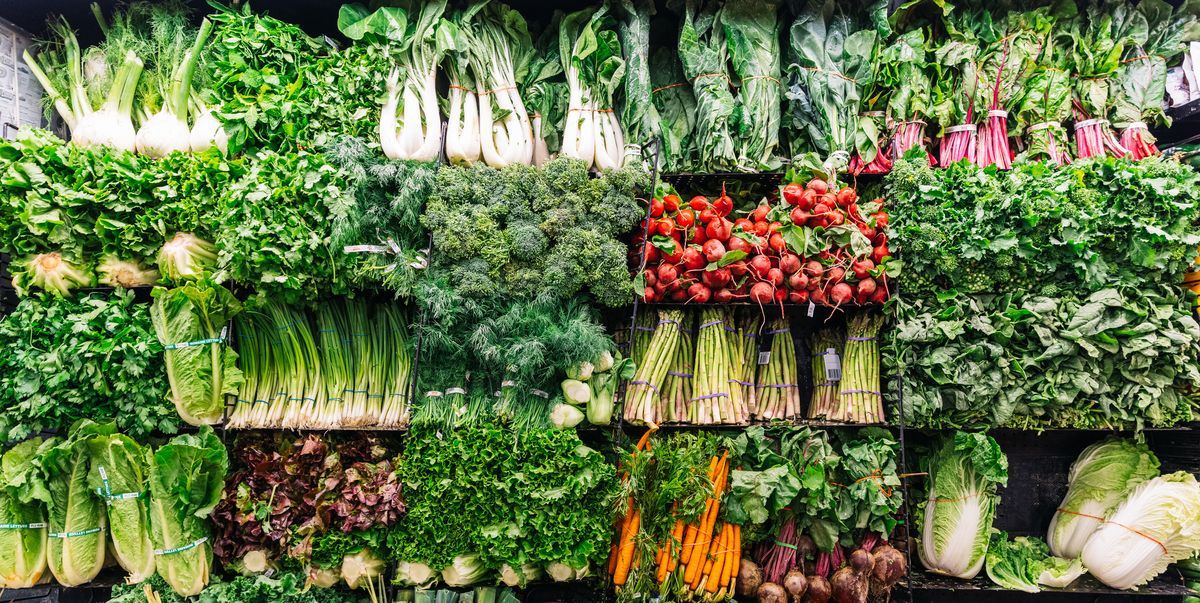You’ve probably heard of the “Dirty Dozen” list. Each year, the Environmental Working Group (EWG) uses data from the USDA to pinpoint the produce with the most pesticides. Last year, strawberries have took the lead. But in the new Shopper’s Guide to Pesticides in Produce, which was released on June 12, strawberries have been knocked out of their number one spot. And there are two newcomers to the list.
So what’s the “dirtiest” fruit or veggie? In this year’s list, spinach swapped places with strawberries for the number one spot. The leafy green was found to have “more pesticide residues by weight than any other type of produce,” according to the site. 75% of non-organic samples contained permethrin, a neurotoxic insecticide banned in Europe.
New to the list are blackberries, which were tested by the USDA for the first time in 2023. And, potatoes, the most-consumed vegetable in the country, also made it to the Dirty Dozen. 90% of potato samples tested positive for chlorpropham, a chemical that prevents sprout growth—and a chemical that’s banned in the European Union.
“EWG’s Shopper’s Guide is a tool to inform consumers and help them with their produce shopping choices, with the goal of everyone eating more fruits and vegetables,” says Alexis Temkin, PhD, EWG Vice President for Science, in the press release.
Other fruits and veggies that made it to the Dirty Dozen include dark leafy greens such as kale, collard greens, and mustard greens; grapes; peaches; cherries; nectarines; pears; and apples.
Produce with the lowest amounts of pesticide residue made it to the “Clean Fifteen.” The top five include pineapples, sweet corn, avocados, papayas, and onions.
How Is The Dirty Dozen Determined?
To determine the list, the EWG looks at pesticide residue from tests performed by the USDA. These tests included over 53,000 samples of 47 washed fruits and vegetables.
This year’s list used a new methodology to get a more accurate depiction of just how harmful dirty some fruits and veggies may be. In addition to the amount of pesticides, the study looked at toxicity, meaning how harmful the pesticides could be.
“Our research takes into account the potency of each chemical and can help shoppers reduce their overall pesticide burden,” says Dayna de Montagnac, MPH, an associate scientist for the EWG.
As a Contributing Writer, and former Associate Editor, at Delish, Allie is a writer, reporter, and producer of features at the intersection of food and culture. Before Delish, Allie worked for publications including Apartment Therapy and Insider. She even spent time working in restaurants and breweries. Allie has dumpster-dived in NYC to expose food waste, reported on the invasive lionfish you can eat, and wrote about the growing trend of weed weddings. Her health and nutrition stories on hydration culture, bananas, and coffee have generated nearly 2M combined views. She loves traveling, running, and eating her way through new places and even has a thorough Google Maps ranking system for her favorite restaurants and bars! When not writing about food, she’s planning her next trip, lifting weights, or training for a race. Expertise: food & culture (Sustainability, Health, Travel) Education: M.S. in Journalism from Columbia University, B.S. in Information Science (User Experience Design) from the University of Michigan
Read the full article here




